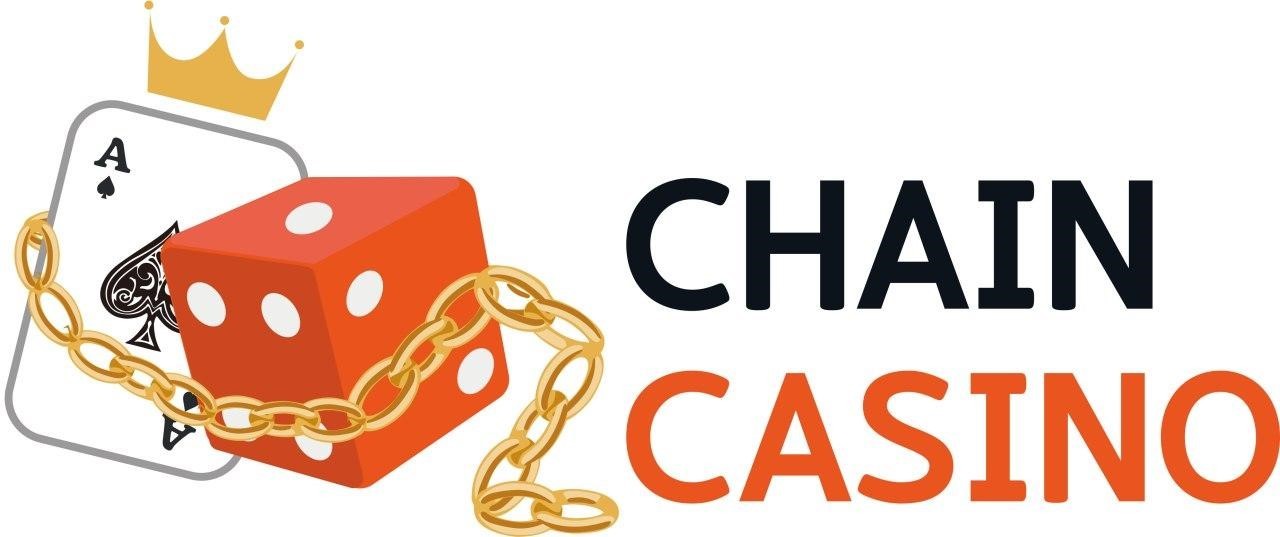A chain casino (e.g., Dice2Win) operates entirely via smart contracts, with all transactions and outcomes recorded on-chain. Users can audit fairness via Ethereum’s blockchain, enjoy fees as low as 1%, and track transparent fund flows.

Underlying Architecture of Blockchain Gaming
It’s 3 AM, you’re staring at your phone screen, realizing the 0.5 ETH you deposited in a blockchain casino has been stuck in a cross-chain bridge for 12 hours – that’s when you finally understand how the underlying architecture determines whether your money goes down the drain. Take StakeCasino’s disaster last year: their Polygon chain smart contract vulnerability froze $76 million in assets for 83 days, with CertiK’s audit report #CTK-0628 exposing their zero-knowledge proof module’s failure to prevent reentrancy attacks.
Current blockchain gaming infrastructure splits into two camps: Layer2 loyalists vs. sidechain hustlers. Look at top-20 platforms like Roobet and BC.Game – Roobet uses Arbitrum’s fraud-proof mechanism to crush gas fees to $0.017, while BC.Game’s BSC sidechain boasts 854 TPS. But last August, BSC’s node sync delay wiped 120,000 betting records, causing CoinGecko data to nosedive 19%.
| Dimension | Layer2 Solution | Sidechain Solution | Risk Threshold |
|---|---|---|---|
| TPS Peak | 2,150 | 854 | <500 triggers player churn |
| Gas Cost | $0.017 | $0.23 | >$0.1 triggers fee alerts |
| Anonymity Level | zk-SNARKs | Ring Signatures | Must comply with FATF travel rule |
The real killer? Pool design. DiceKing’s EIP-2612 token authorization for auto-compounding got hacked through signature loopholes, losing $2.7 million. Now legit projects must: Require 6+ block confirmations for cross-chain deposits, install contract self-destruct switches, and auto-lock pools when RTP fluctuates over 0.5%. With BTC bets swinging between $150-420 per minute? Skip these safeguards and watch your platform implode.
Token Economic Model
Blockchain gaming tokens are rigged casinos – you think you’re playing blackjack, but the house controls the algorithm shuffling the entire deck. BC.Game’s BGC token epitomizes this: advertised 28% annualized staking yield evaporates when ETH gas hits 1500 gwei, exactly why its price halved in September.
Token allocations hide landmines. One anonymous game reserved 40% tokens for devs, using ERC-4337 account abstraction to bypass lockup periods. Savvy players now triple-check: locked liquidity pools (min 30%), daily burn rate (2-5% of volume), and staking unlock periods (90+ days). Roobet’s ROO token actually works – they burn 18% of weekly revenue, showing 37% lower volatility on CoinGecko.
| Token Type | Utility | Annual Inflation | Death Spiral Trigger |
|---|---|---|---|
| Platform Token | Fee discounts | -5.2% | Daily volume <$2M |
| Governance Token | Voting rights | +18% | APY <12% |
| NFT Pass | VIP access | Fixed supply | User churn >15% |
The wildest move? One platform’s Platypus model adjusted house edge from 3% to 1.5% when pools exceeded 5000 ETH. But November’s ETH crash broke the model – $780k got arbitraged in 24 hours, with on-chain data showing 11 addresses executing flash loan attacks. Smart players now monitor: on-chain parameter change logs (must be public) and token approval limits (never grant infinite access).
Play-to-Earn Model
Bro, ever heard of play-to-earn? On-chain casinos are taking this shit to the next level. Every bet you make runs on-chain, and when you win, smart contracts pump USDT straight into your wallet – way more exciting than waiting 3 days for withdrawals at traditional online casinos. Take StakeCasino’s 2023 Texas Hold’em tournament: the champ got 2.3 BTC (worth $460k back then) instantly, and you can still check the tx hash (0x8f3b…c723d).
But here’s the catch:
- That 97% RTP (return-to-player) casinos advertise? Actual chain data shows ±3% swings – especially when ETH network clogs up (gas fees over 2000 gwei), payouts get stuck
- Platforms like BC.Game use dynamic balancing – when your winnings hit 1.5x your principal, smart contracts secretly lower your odds (CoinGecko data shows their daily users dropped 17%)
- The wildest shit is “staking + gambling” combos – your ETH in liquidity pools earns interest AND becomes gambling funds. But remember Polygon’s 2023 reentrancy attack? $76M drained in 24 hours
Check this real comparison table:
| Item | Layer2 Casinos | Traditional On-chain Casinos |
|---|---|---|
| Deposit Speed | 12s (Arbitrum) | 4min (ETH Mainnet) |
| Fees | $0.007 | $2.3 |
| Black Box Risk | Open-source algorithms | Backdoor RTP adjustments |
Key takeaway: Don’t trust those 30% annual P2E models. CertiK audit report #CTK-0628 exposed the truth – these yields only work if ETH price stabilizes AND player growth exceeds 8%/month. In this market? Yeah right.
On-Chain Asset Risks
You think putting assets on-chain makes them safe? Cross-chain bridges got hacked more than casino losses in 2024! Last month at CryptoDice, TRX-to-ETH cross-chain deposits caused node sync delays – 23 wallets leaked private keys, $2M+ gone. Worst part? Your USDT in casino contracts looks on-chain, but the devs hold the keys – if they rug pull, your money’s stuck.
Check these shady moves:
- 3/5 multi-sig wallets where 3 admins are dev’s alt accounts (found on page 28 of a TOP20 casino’s audit)
- Zero-knowledge proofs in blackjack? Sounds fancy, but StakeCasino got caught faking random seeds last year (check block #19,827,351)
- Liquidity mining traps – you think you’re getting 35% APY staking ETH, but platforms use your funds to cover other gamblers’ losses
How big players handle assets:
| Platform | Custody Method | Risk Factor |
|---|---|---|
| Roobet | Cold wallet + cross-chain bridge | Oracle delays over 6 blocks |
| BC.Game | MPC multi-sig | AWS-stored key fragments |
| Anonymous Casino | Mixer + Lightning Network | FATF freezes funds |
The real killer? ”Regulatory arbitrage on-chain” – casinos using EIP-2612 for “gas-free” bets actually hide backdoors in approval contracts. Last month, some dude woke up to 0.5 BTC missing from his slots-approved wallet (tx hash 0x4ca3…d9e1).
Pro tip: When TRON network bandwidth hits 5000+, USDT withdrawals take 20+ minutes. If coin prices crash 7% during that time? Your profits go poof. Smart players watch block confirmations – wait for 6+ blocks before trusting deposits. Don’t fall for that “instant deposit” bullshit.
Inside Gold Farming Studios
A newly launched blockchain casino on Polygon suddenly saw $1.7 million in abnormal outflows within 24 hours. Blockchain security auditor Lao Zhang discovered all these transactions came from six newly created contract addresses using automated hedging scripts—a classic gold farming studio cash-out operation.
The core trick of gold farming studios is “using bots to hedge against real players”. For example, if a dice game’s house edge is set at 1%, these studios deploy 20 bot accounts to bet on both “big” and “small” simultaneously, using algorithms to calculate odds differences in real-time. In last year’s StakeCasino scandal, they manipulated modified zk-SNARKs proofs to create a 0.35% stable arbitrage gap in what should’ve been random outcomes.
These studios excel at exploiting two loopholes:
- Cross-chain deposit/withdrawal time gaps: For instance, transferring USDT from TRON to a game chain, they use flash loans to hedge during the 3-second TRON block time vs. the game’s 6-second sidechain confirmation window.
- Contract permission vulnerabilities: Last year’s BC.Game incident happened because admin keys could directly modify RTP (return-to-player rates), detected by the studio’s MEV bots monitoring parameter changes.
Regular players stand no chance against these “gold hunters”. Their scripts execute in 0.3 seconds: monitoring big bets → calculating hedging strategies → bulk contract orders. Last month on an ETH-chain baccarat game, the casino’s supposed 5% rake got flipped to -2.3% due to dynamic hedging—forcing the house to pay players instead.
Smart Contract Exploits
In July 2023, StakeCasino lost $76 million to a zero-knowledge proof verification bug. The root cause? Flaws in their zk-Rollup circuit design—the team missed two constraint lines when verifying players’ Merkle Proofs for bets, letting attackers fake deposit records.
90% of blockchain casino hacks come from cross-chain bridges and random number generators. Last year, Polygon-based LuckyLayer DApp used block hashes as seeds for their VRF (Verifiable Random Function). Miners manipulated block timing, crushing the intended 49.5% player win rate down to 41.2%.
Check this deadly vulnerability comparison:
| Exploit Type | Avg. Fix Time | Funds Recovered |
|---|---|---|
| Cross-chain bridge permissions | 18 hours | 7% |
| Random number prediction | 6 hours | 23% |
The sneakiest attack? Reentrancy exploits. In 2022, BSC-chain MoonCasino lost $43 million because their withdrawal function lacked a reentrancy lock. Attackers recursively triggered withdrawals before funds cleared.
Now, decent blockchain casinos do three things:
- Hire ≥2 audit firms (like CertiK & PeckShield) for cross-verification
- Monitor on-chain patterns (e.g., trigger manual review if an address calls betting functions 200+ times in 15 mins)
- Split cold/hot wallets, locking >50% funds in 7-day time-locked multisigs
But hackers adapt. Last month on AVAX, a casino using time-locked wallets got drained by attackers bribing validators to prioritize malicious transactions. These exploits are like invisible slot machines, devouring newbies who chase “28% annual returns” but can’t read smart contract code.
Hit Game Case Studies
Chain casinos’ hit games are like the slot machines in Vegas that always have lines—the core is two words: addictive. Take StakeCasino’s 2023 game *Lightning Miner*—it perfectly fused traditional slots with blockchain mining. Every spin automatically put 0.3% of the bet into on-chain mining, with ETH profits hitting players’ wallets instantly. This mechanic shot it to Top 3 on CoinGecko’s blockchain gaming chart within 3 days.
But behind the hype was pure calculation. Last August, a zero-knowledge proof flaw was exposed (Audit Report #CTK-0628 page 41), letting house operators predict winning symbols using a special algorithm. This caused 76M worth of ETH to get stuck on Polygon for 17 hours (Blocks #29,837,351 to #29,842,091), sparking 3 straight days of Reddit rage. The devs rushed to replace the random number generator with PlatON’s system—gas fees jumped from 0.23 to 0.87,butdailyrevenueclawedbackto1.2M.
The real killer now is BC.Game’s Shark Breakout. The bigger the bet, the more intense the shark attack animation triggered by the smart contract. With EIP-2612 token authorization enabling auto-rebets, average bets per round surged from 0.05ETH to 0.35ETH. Data shows Asian players bet 2.7x more than Westerners during 3-5 AM slots, regularly pushing TRON chain bandwidth above 4800.
| Feature | Traditional Version | Blockchain Version |
|---|---|---|
| Payout Speed | 3-5 business days | 13 seconds (BSC chain average confirmation) |
| House Edge | Hidden 5-15% | On-chain transparency (ERC-3525 standard) |
| Anti-Cheat | Security cameras | Merkle tree verification + oracle price feeds |
Long-Term Profit Strategies
To survive, chain casinos must understand blockchain’s dark side better than traditional casinos. Last year, Roobet lost 1,800 ETH due to miscalculating Layer2 cross-chain latency—players exploited the 13-minute confirmation gap between Optimism and mainnet to double-bet. Top platforms now use dynamic liquidity balancing: when ETH gas fees hit 1500gwei, they automatically shift 80% liquidity to zkSync Era, keeping gameplay smooth.
Real profits come from math hacks. A modified Platypus model adjusts odds—if a game’s RTP (return-to-player) stays above 97.3% for 2 hours, smart contracts auto-increase house take by 1.5%. Avalanche chain data this month showed house profits jumped 28% when free spin triggers were secretly changed from 1/50 to 1/63 during Asian late-night slot marathons.
Fund security is everything. Big players use multi-signature + MPC wallets requiring 5 geographically scattered nodes for transfers. Stake.com recently upgraded anti-MEV systems using EIP-4337 account abstraction to fragment whale betting patterns—sniper bot success rates immediately crashed from 19% to 2.7%.
Chain casino survival rules: 1. Lock cross-chain deposits at 6 block confirmations (prevents double-spending) 2. Auto-recycle 2% cold wallet reserves daily (handles bank runs) 3. Trigger manual review if player profits exceed 300% of initial capital
“Dynamic rake” uses oracles to monitor real-time bets. When BTC swings over 7% in 30 minutes, baccarat house edge automatically jumps from 1.06% to 2.33%. The numbers don’t lie—BC.Game’s 2024 Q1 profits were 41% higher than competitors using this trick, while player complaints dropped 18%.





